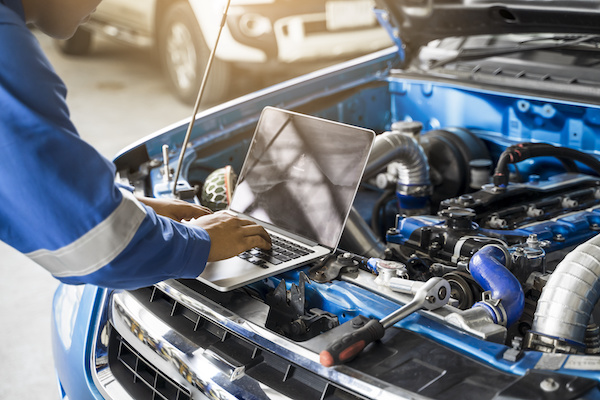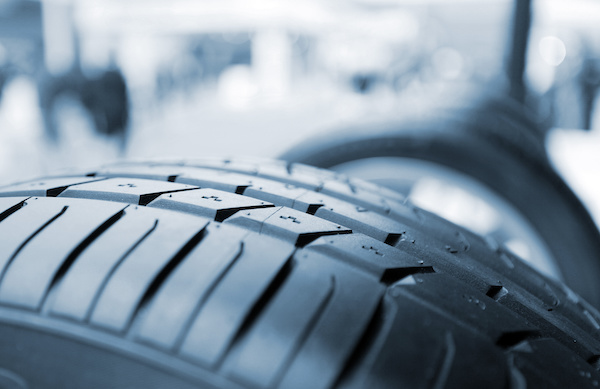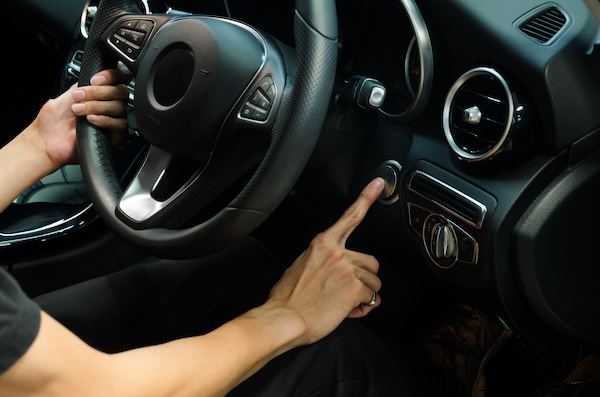Posted on 12/23/2022

It's important to make sure all of your vehicle's lights are functioning correctly for safety and legal reasons. So, if you've noticed that your tail light is out, it might be time to take a look at why it's not working and how to fix the issue. In this blog post, we'll discuss some of the common causes of a non-functioning tail light and the best ways to diagnose and repair the issue. Common Causes of a Non-Functioning Tail Light There are several potential causes for why your tail light may not be working. The most likely causes include a burned-out bulb, broken or corroded wiring, a faulty fuse, or a bad switch. Burned-out bulb is as simple as it sounds: the light bulb itself has expired and needs to be replaced. A broken, corroded, or loose wiring connection means that the power from your vehicle's battery is not reaching the tail light assembly. This can be caused by a variety of factors such as worn insulation on the wires, water damage, or physical dam ... read more
Posted on 11/29/2022

Whether you are buying a car, know that it is a significant investment. In fact, some people can argue that searching to buy a pre-owned car is an even harder task than one that is brand new. When looking at pre-used vehicles, you have to make sure the condition that the seller claims it is in is tried and true. While a car might catch your eye and look as it is stated on the outside, it can be hard to determine whether the internal workings of the vehicle match the seller’s claims. That is where the beauty of a pre-purchase inspection comes in! A pre-purchase inspection, or PPI, is a procedure performed at Snider Auto Care to ensure your confidence in buying a pre-owned car, SUV, or truck. Our technicians will perform a thorough bumper-to-bumper inspection to let you know the vehicle’s true condition. We can report any underlying issues or concerns with the car. Overall, it will help you gain confidence in th ... read more
Posted on 10/31/2022

When you drive with a quality set of tires, you'll find it much simpler and smoother to control your vehicle. Unfortunately, as tires age, they can begin to present hazards to your vehicle, including reduced performance, increasingly difficult steering, and even the risk of tire blowouts. If you notice that your tire has a bulge, it's important to address the issue as soon as possible by replacing the tire. Tire bulges indicate that the interior of your tire has lost its structural integrity and failed, and as a result, it can blow out and cause you to lose control of your vehicle. What Is The Cause Of Tire Bulges? Several issues can result in a tire bulge, including damage from road hazards and improper tire maintenance. Some of the most common reasons a tire bulge forms include the following: Your tire was overinflated or underinflated. If the tire isn't properly inflated, it won't be able to provide your vehicle with the proper level of support. You should c ... read more
Posted on 9/29/2022
.jpeg)
Your car requires several different fluids to ensure it is lubricated, powered and functioning. This means that occasionally, you might notice a leak. When this happens, it is important to observe its color and characteristics. For instance, • Engine oil is Light brown or dark • Brake fluid is usually Transparent to dark and sticky • Transmission fluid is Reddish and light or viscous and brown • Coolant fluid can be Icky, yellow, greenish, or pinkish • Power steering fluid will be reddish or light brown • Clear and thin water can be from several parts of the car How to tell if your vehicle is really leaking If you suspect that your car is leaking, there are ways to confirm this and evaluate the situation. Caution Light on the Dashboard There are several dashboard lights in newer vehicles. These are intended to notify you of a variety of potential engine problems. A number of factors, including the fluid making the transmission heat up more than u ... read more
Posted on 8/30/2022

Every motorist dreads the moment they try to start their vehicle and hear either nothing or the sound of the starter motor turning over without the engine catching. Delayed starting, or failure to start, is often down to a fault in either the battery or the alternator. Here we cover what the battery and the alternator do, as well as signs that your engine problems could be down to one or the other. The Function of the Battery and the Alternator Simply put, the battery provides the electrical charge needed to instigate the ignition process, as well as power the vehicle's electrical systems when the engine is switched off. In contrast, the alternator converts mechanical energy into the electrical energy that's stored in the battery. It also generates the power that's needed to keep the vehicle's electrical systems running when you're on the move or the engine is idling. Both are essential to ensure your vehicle starts and runs smoothly. Signs That you Have a Fault ... read more